Generative AI is a kind of artificial intelligence technology that is capable of generating different kinds of content, including text, imagery, audio and synthetic data.
Introduction to Generative AI
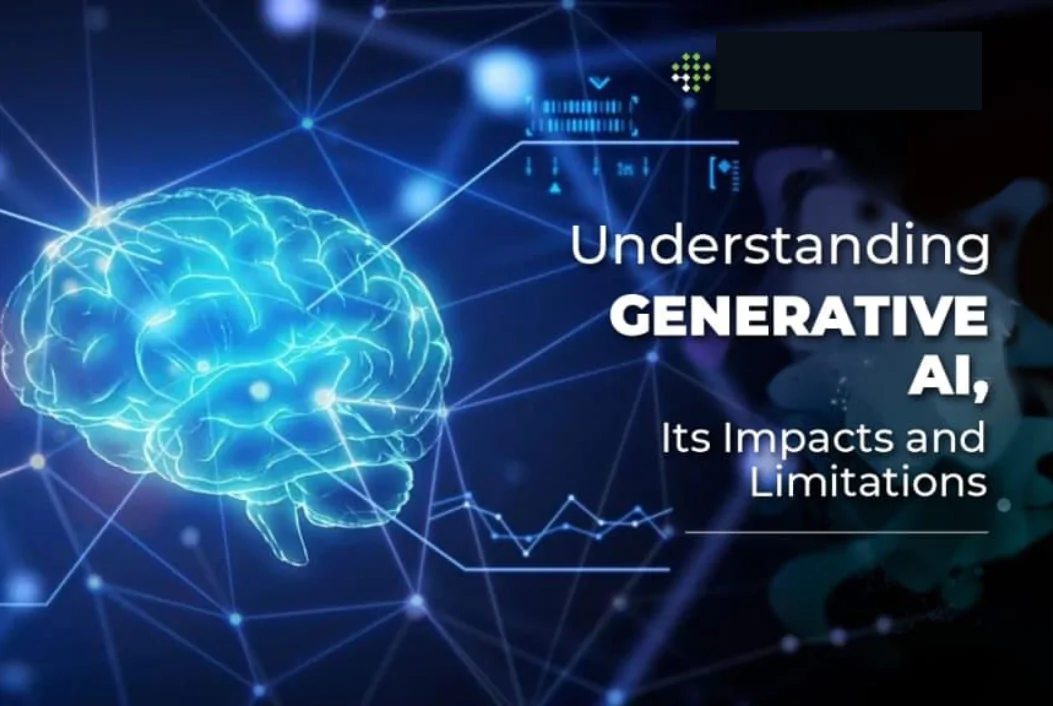
Generative Artificial Intelligence (AI) is a fascinating field that explores the creation of intelligent systems capable of producing new content, whether it’s images, text, music, or even human-like conversations. In this comprehensive guide, we will dive deep into the world of Generative AI, understanding its basics, evolution, importance, and applications. The ease of use of new user interfaces that enable the creation of excellent text, graphics, and videos in a matter of seconds has been the driving force behind the recent buzz surrounding generative AI.
Definition and Basics
Generative AI refers to a subset of AI that focuses on generating new content rather than analyzing existing data. It uses complex algorithms and models to create original outputs based on patterns learned from large datasets.
Evolution of Generative AI
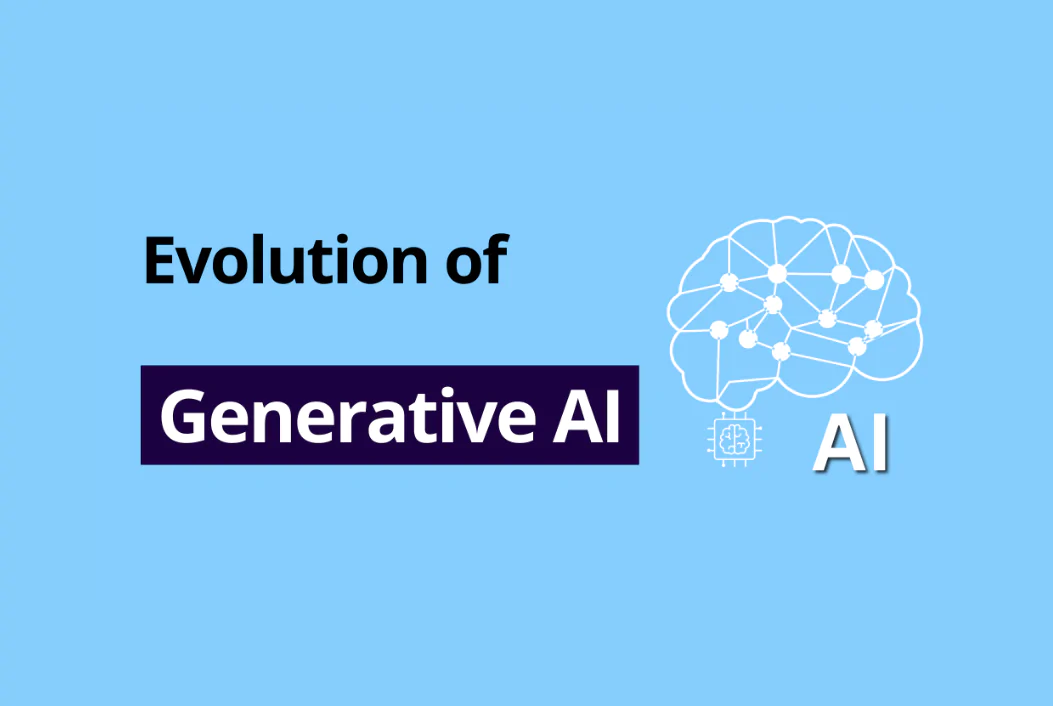
Over the years, Generative AI has seen significant advancements, from early rule-based systems to the rise of neural networks and deep learning models. These developments have paved the way for cutting-edge applications in various fields.
In the early days of generative AI, data submission required the use of an API or other laborious procedures. The developers needed to learn how to use specialized tools and write programs in languages like Python.
These days, generative AI pioneers are creating improved user interfaces that enable you to express a request in simple terms. Following an initial response, you can further tailor the outcomes by providing input regarding the tone, style, and other aspects you would like the generated content to encompass.

Generative AI history
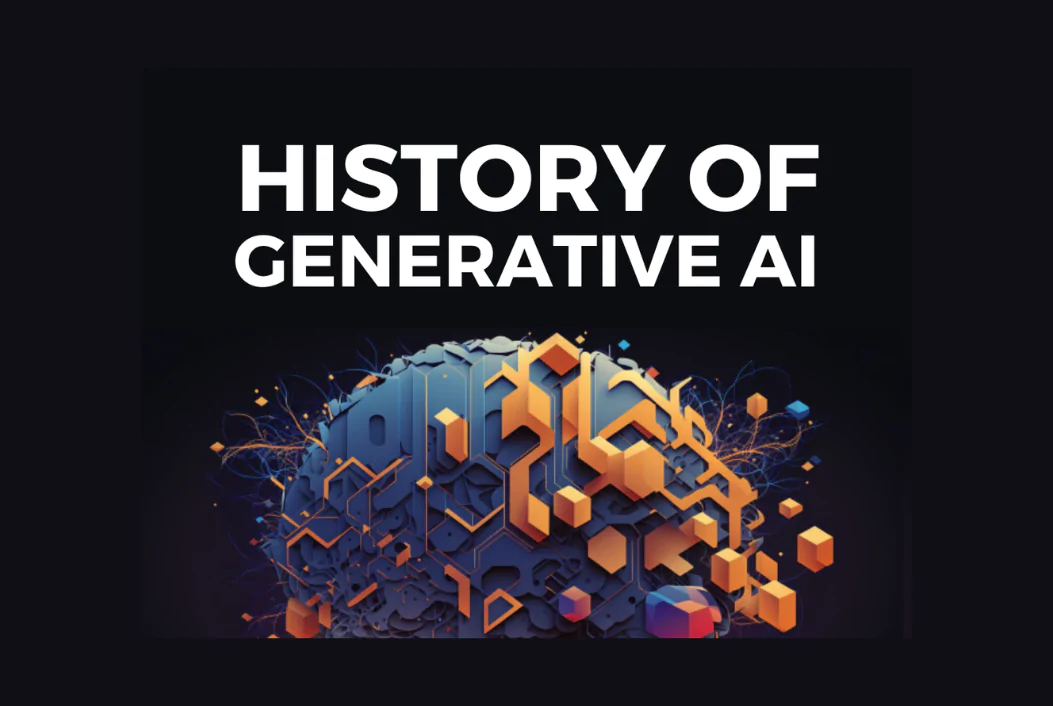
One of the first example of generative AI was the chatbot Eliza, developed by Joseph Weizenbaum in the 1960s. These early implementations relied heavily on patterns, had a small vocabulary, and were otherwise flawed in that their rules-based approach was easily broken. Additionally, early chatbots were challenging to expand and customise.
Following breakthroughs in deep learning and neural networks in 2010, the field experienced a rebirth as a result of the technology’s ability to automatically learn how to transcribe audio, classify image elements, and parse text that had already been written.
Importance and Applications
Generative AI plays a crucial role in boosting creativity, innovation, and automation across industries. From art and design to healthcare and finance, the applications of Generative AI are vast and impactful.
How Generative AI Works
Understanding Generative Models
Generative models are algorithms designed to learn the underlying structure of data and generate new samples that are similar to the training data. These models can be trained on image, text, or audio data, producing realistic outputs.
Generative AI models
There are several types of Generative AI models, including Variational Autoencoders (VAEs), Generative Adversarial Networks (GANs), and Autoregressive models. Each type has its unique strengths and applications.
Variational Autoencoders (VAEs), which excel in learning latent representations of data and generating new samples based on learned distributions.
Generative Adversarial Networks (GANs) are another prominent model type, comprising a generator and discriminator network that compete in a game-like manner to produce realistic synthetic data.
Autoregressive models, such as autoregressive transformers (ART), are capable of generating sequences by predicting the next token given previous tokens, making them particularly suited for tasks like text generation.
These models have found applications across diverse domains, from generating realistic images and videos to synthesizing natural language text and even creating music compositions.
Training and Generation Process
Training a Generative AI model involves feeding it with a large dataset, optimizing its parameters through iterative processes, and generating new content based on learned patterns. The generation process aims to produce realistic and novel outputs.
Advantages and Challenges of Generative AI
Benefits of Generative AI
Generative AI enables endless possibilities for creativity, content generation, and problem-solving. It has the potential to revolutionize industries by automating tasks and sparking innovation.
- Automating the laborious process of content creation by hand.
- Decreasing the time it takes to reply to emails.
- Improving the responses to particular technical inquiries.
- Creating realistic representations of people.
- Assembling complicated data into a logical narrative.
- Simplifying the process of producing material in a specific manner.
Ethical Concerns and Limitations
Despite its benefits, Generative AI raises ethical concerns related to privacy, security, and authenticity. The misuse of AI-generated content can lead to misinformation and infringement of intellectual property rights.
Here are some of the limitations to consider when implementing or using a generative AI,
- It doesn’t always reveal the content’s original source.
- Evaluating original sources for bias can be difficult.
- Content that sounds realistic can make it more difficult to spot false information.
- It can be challenging to figure out how to adjust for novel situations.
- Outcomes may mask prejudice, bigotry, and hatred.
Security and Privacy Implications
The proliferation of AI-generated content poses security risks, such as deepfakes and data manipulation. Safeguarding privacy and ensuring data integrity are critical challenges in the era of Generative AI.
Real-world Applications
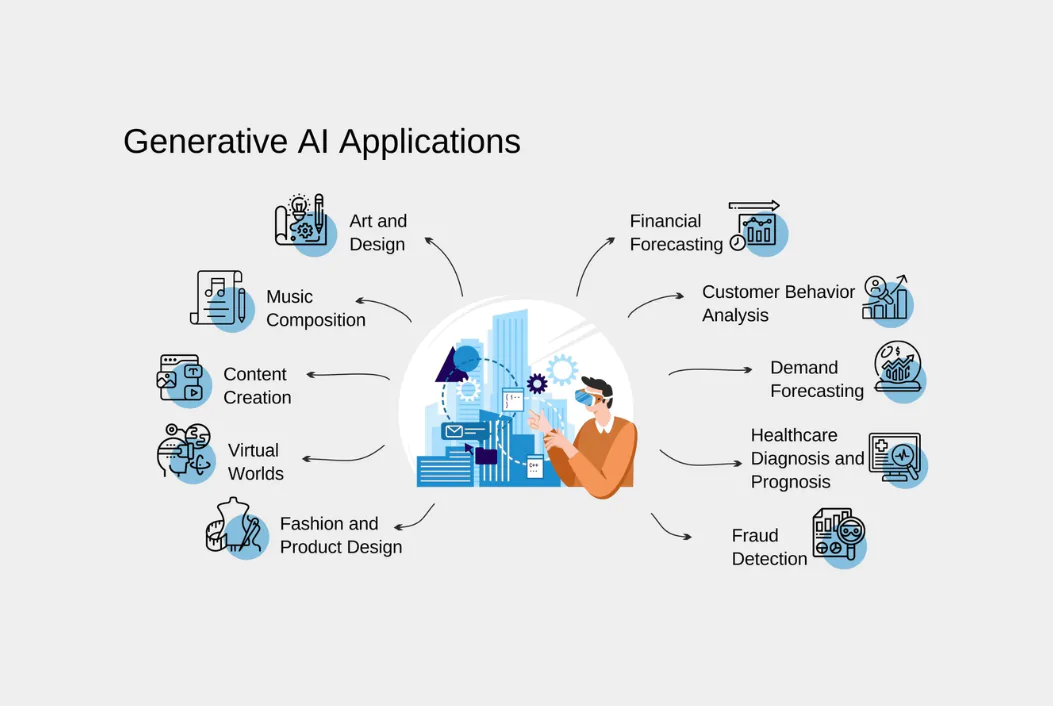
Art and Creativity
Generative AI has transformed the art world, allowing artists to explore new creative possibilities and push the boundaries of traditional art forms. From digital paintings to music composition, AI-generated art is gaining recognition.
Content Generation
In the digital age, content creation has become more efficient with the help of Generative AI tools. Chatbots, language models, and recommendation systems use AI to generate relevant and engaging content for users.
Healthcare and Science
Generative AI is revolutionizing healthcare and scientific research by assisting in drug discovery, medical imaging analysis, and disease prediction. AI-powered tools enhance decision-making and accelerate innovation in these critical fields.
Generative AI Use Cases
- In order to improve fraud detection systems, finance can monitor transactions within the context of an individual’s past.
- Generative AI can be used by law firms to create and interpret contracts, examine the evidence, and formulate arguments.
- To more precisely and affordably identify faulty parts and their underlying causes, manufacturers can use generative AI to combine data from cameras, X-rays, and other metrics.
- It can help media and film companies create content more affordably and translate it into other languages using the actors’ own voices.
- It can help architectural firms create and modify prototypes more quickly.
- GAN can be used by gaming companies to create game levels and content.
What are some examples of generative AI tools?
Tools for generative AI are available for a variety of modalities, including text, images, music, code, and voices. You can investigate the following well-known AI content generators:
- Text generation tools include GPT, Jasper, AI-Writer and Lex.
- Image generation tools include Dall-E 2, Midjourney and Stable Diffusion.
- Music generation tools include Amper, Dadabots and MuseNet.
- Code generation tools include CodeStarter, Codex, GitHub Copilot and Tabnine.
- Voice synthesis tools include Descript, Listnr and Podcast.ai.
- AI chip design tool companies include Synopsys, Cadence, Google and Nvidia.
Future of Generative AI

Emerging Trends and Innovations
The future of Generative AI holds exciting possibilities, such as improved model performance, enhanced creativity tools, and seamless human-machine collaboration. Innovations in AI ethics and regulation will shape the path forward for Generative Artificial Intelligence.
Potential Impact on Industries
Generative AI’s impact on industries is profound, with automation, personalization, and data-driven insights driving growth and efficiency. Businesses must adapt to the evolving AI landscape to stay competitive and relevant.
Ethical Considerations and Regulations
As Generative AI becomes more prevalent, ethical considerations around data usage, bias mitigation, and accountability become paramount. Establishing regulations and guidelines for AI development and deployment is essential to foster trust and responsible use.
Summary
In this comprehensive guide, we explored the world of Generative AI, from its definition and applications to its impact on industries and society. Generative AI’s potential for innovation is boundless, but it also comes with ethical challenges and security implications. As we embrace the future of AI, understanding, and addressing these complexities will be crucial for shaping a more responsible and inclusive AI landscape.
FAQs
-
What is the difference between generative AI and traditional AI?
Generative AI focuses on creating new content, while traditional AI analyzes existing data to make predictions or decisions.
-
How is generative AI being used in everyday life?
Generative AI powers applications like virtual assistants, content recommendation systems, and personalized services that enhance user experiences.
-
What are the potential risks associated with generative AI technologies?
Risks include the spread of misinformation, data privacy breaches, and the manipulation of AI-generated content for malicious purposes.
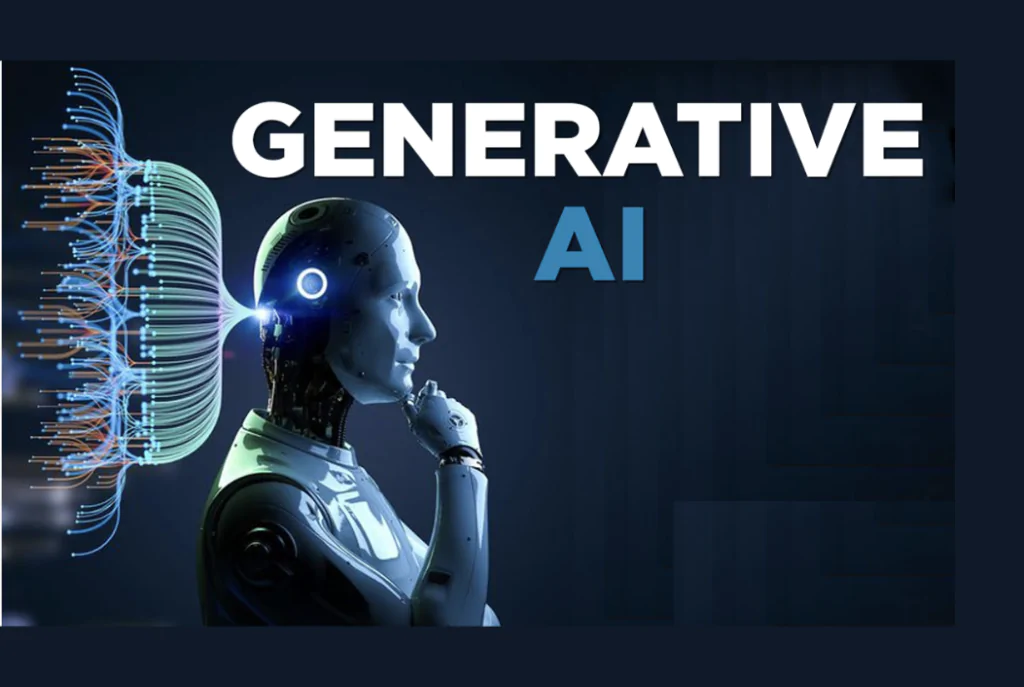
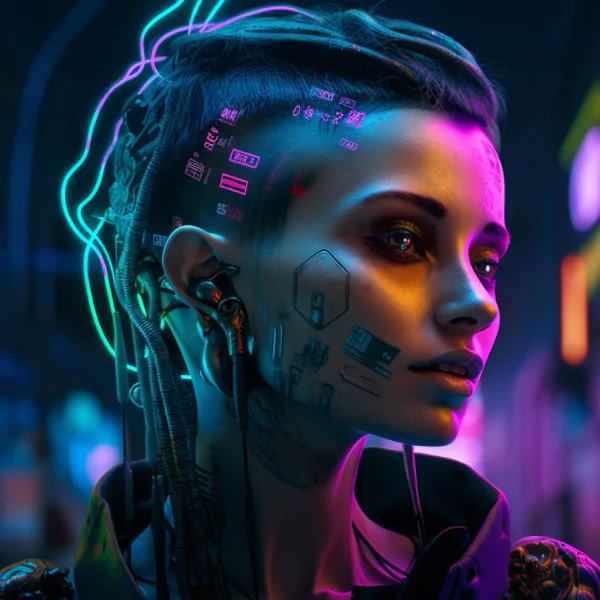
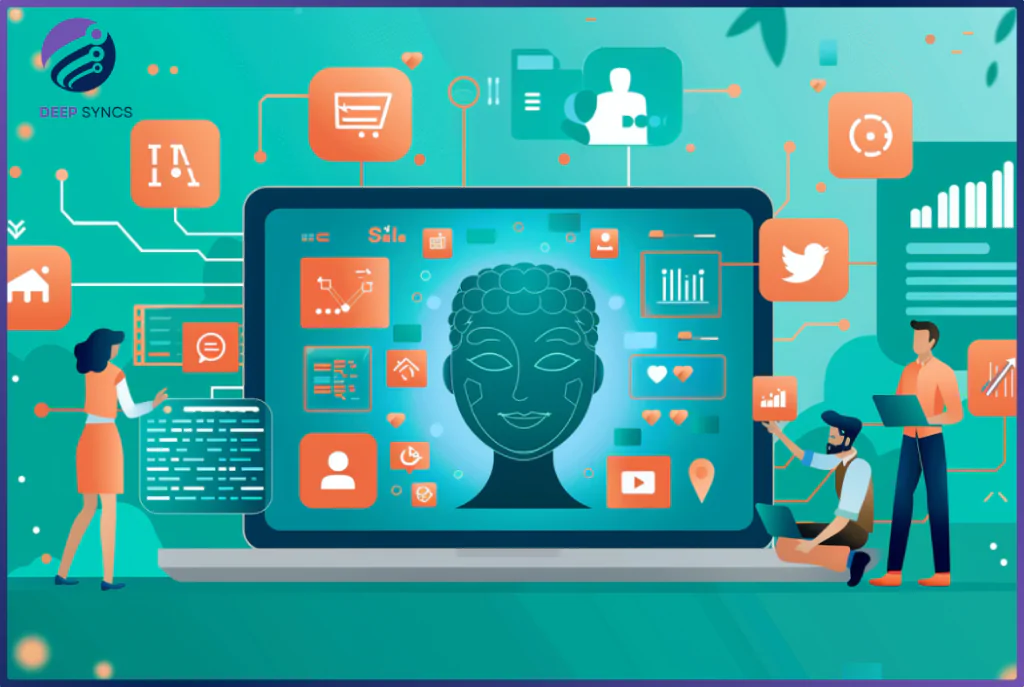
Wow, amazing blog layout! How long have you been running a blog for?
you made running a blog glance easy. The whole look of your website is excellent, as smartly as the
content! You can see similar here najlepszy sklep